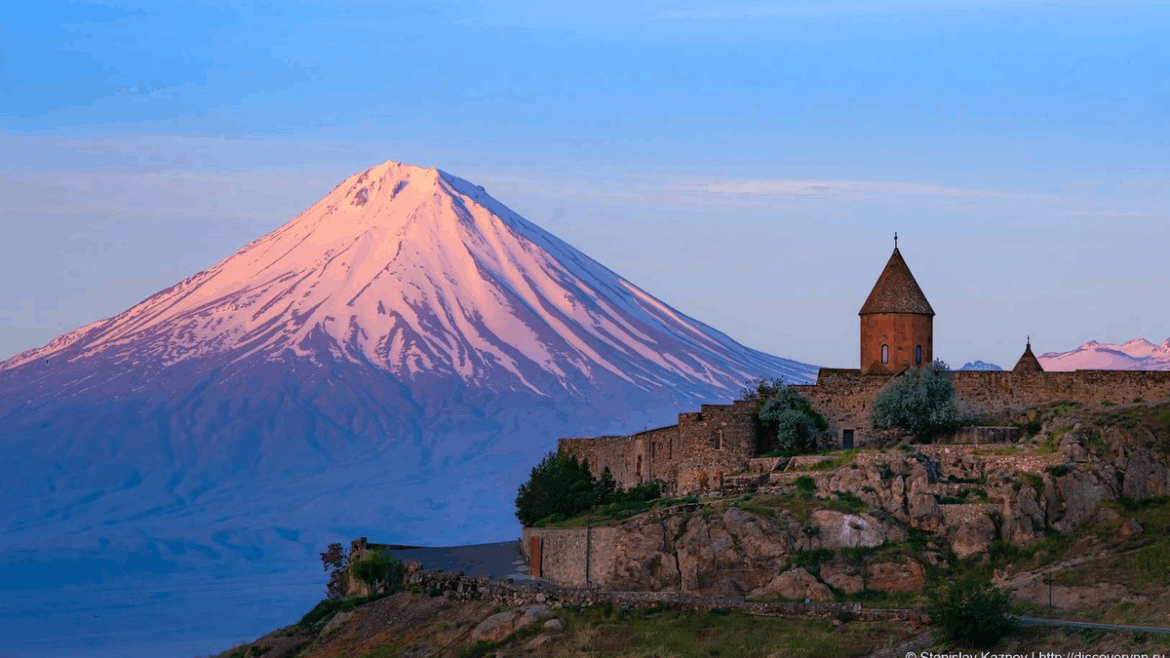Nestled between Europe and Asia, Armenia is a land of ancient monasteries, rugged mountains, and warm hospitality. It is one of the world’s oldest nations, the first to adopt Christianity as a state religion, and a living museum of human endurance and spirit. For travelers seeking authenticity, culture, and breathtaking landscapes, Armenia offers a rare blend of history and natural beauty that lingers in the heart long after the journey ends.
The Soul of the Caucasus
Small in size but immense in character, Armenia is a country of contrasts — snow-capped peaks beside sunlit valleys, medieval fortresses beside modern cafés, and quiet monasteries echoing with centuries of prayer. Its capital, Yerevan, one of the oldest continuously inhabited cities in the world, is a vibrant mix of old and new, where Soviet-era architecture meets pink tufa-stone facades and lively terraces filled with music and conversation.
From Yerevan’s Republic Square, travelers can stroll to the Cascades, a vast stairway adorned with sculptures and fountains, offering panoramic views of the city and the majestic Mount Ararat — the national symbol of Armenia, visible across the border in Turkey. Though no longer within Armenian territory, Ararat’s snow-covered peak remains deeply woven into the nation’s identity, representing both pride and longing.
Echoes of Ancient Faith
Armenia’s spiritual heritage is among the richest in the world. The country’s landscape is dotted with hundreds of monasteries and churches, many built over a thousand years ago. These sites are not only architectural masterpieces but also sacred spaces that reveal the resilience of a people who preserved their faith through centuries of hardship.
A visit to Echmiadzin Cathedral, often called the “Vatican of Armenia,” is a must. Built in the 4th century, it is the world’s oldest Christian cathedral and the spiritual center of the Armenian Apostolic Church. Another unmissable site is Khor Virap, perched on a hill overlooking Mount Ararat. According to legend, St. Gregory the Illuminator was imprisoned here for 13 years before converting King Tiridates III — an act that led Armenia to embrace Christianity in 301 AD.
Equally awe-inspiring are the cliffside monasteries of Geghard and Tatev, both UNESCO World Heritage Sites. Geghard is partially carved into the mountain rock and surrounded by breathtaking gorges, while Tatev, dramatically situated atop a plateau, can be reached by the Wings of Tatev, the world’s longest reversible cable car.
Nature and Adventure
Armenia is a paradise for nature lovers and hikers. The Lori and Tavush regions in the north offer lush forests, rivers, and hiking trails leading to hidden monasteries. In the south, the Syunik province boasts deep canyons and ancient villages that feel untouched by time.
At the heart of the country lies Lake Sevan, one of the largest high-altitude lakes in the world. Known as the “blue pearl of Armenia,” it offers crystal-clear waters ideal for swimming, boating, and relaxation. The Sevanavank Monastery, standing proudly on a peninsula overlooking the lake, provides one of the most iconic views in Armenia.
For adventure seekers, climbing Mount Aragats, the country’s highest peak at 4,090 meters, is a rewarding challenge. In winter, Tsaghkadzor, a popular ski resort, attracts both locals and international visitors for its slopes and cozy mountain lodges.
The Warmth of the People
Armenians are known for their hospitality and generosity. Visitors are often greeted with genuine warmth — and with food. The national cuisine is a feast of flavors, reflecting centuries of cultural exchange. Dishes like dolma (grape leaves stuffed with rice and meat), khorovats (Armenian barbecue), and lavash, the traditional flatbread baked in clay ovens, are central to every meal.
Sharing a meal in Armenia is more than eating — it is a celebration of life. Travelers are often invited into family homes, offered homemade wine or brandy, and encouraged to join toasts celebrating friendship and peace.
A Journey Through Time
Beyond its religious and natural treasures, Armenia tells a powerful story of survival and rebirth. The Armenian Genocide Memorial and Museum in Yerevan stands as a solemn reminder of the nation’s tragic past and its enduring will to live. It is a moving experience that helps visitors understand the depth of Armenian identity and resilience.
The country also has a growing modern side. Yerevan’s cafés and wine bars buzz with energy, art galleries exhibit contemporary Armenian creativity, and summer festivals fill the streets with dance and laughter. Despite its deep historical roots, Armenia feels very much alive — evolving, hopeful, and proud.
Practical Information
Best time to visit: April to October for warm weather and clear mountain views.
Currency: Armenian Dram (AMD).
Language: Armenian; Russian and English are commonly understood in cities.
Getting around: Yerevan serves as the main hub; most attractions are accessible via day trips or guided tours.
Visa: Many nationalities can enter visa-free or obtain an e-visa online.
A Timeless Land
Traveling through Armenia feels like walking through layers of history — from ancient kingdoms to medieval monasteries, from Soviet influences to a modern, independent spirit. Every mountain, church, and stone seems to whisper a story, and every smile welcomes you as if you were returning home.
Armenia may be small, but its heart is vast. Between the echo of prayers in mountain monasteries and the laughter shared over a glass of wine, travelers discover something rare — a land where history, nature, and humanity remain beautifully intertwined.
To visit Armenia is not just to see a country; it is to experience a soul carved in stone, blessed by faith, and warmed by the eternal sun of the Caucasus.


